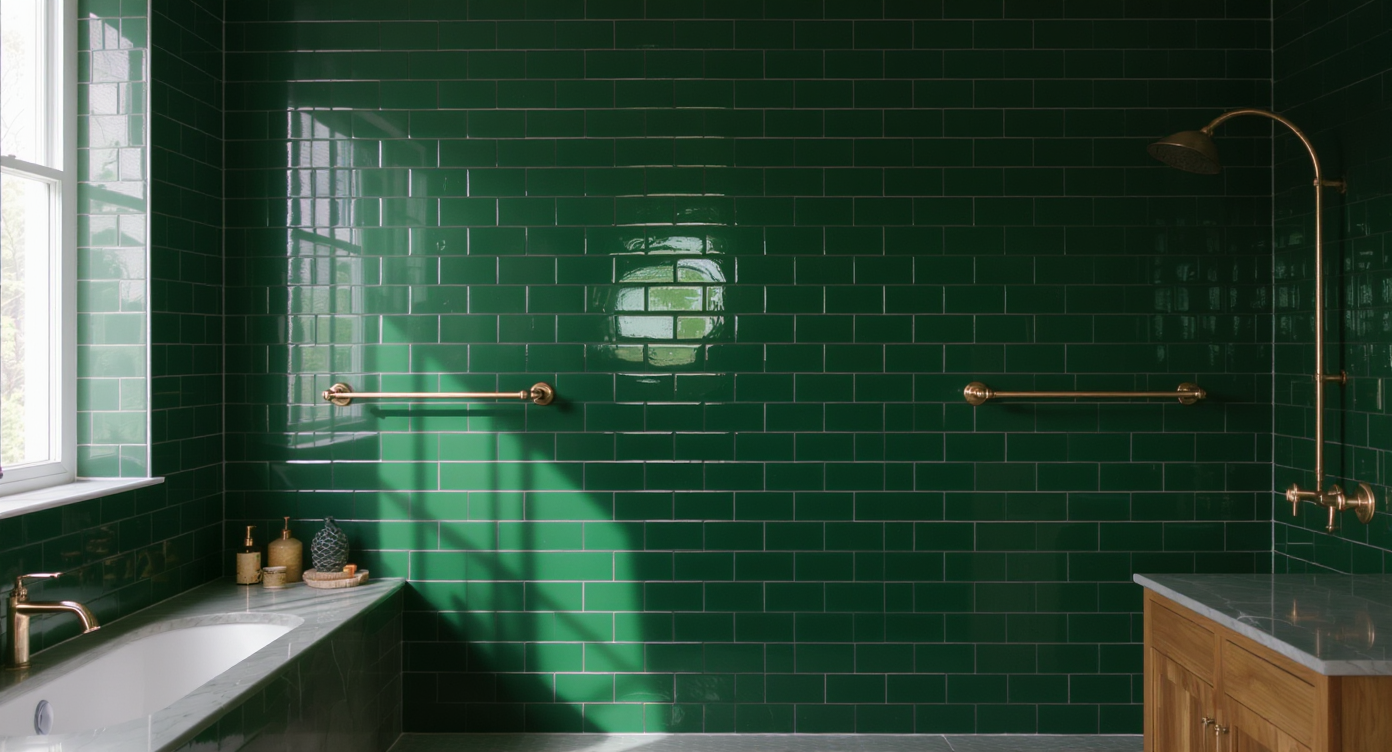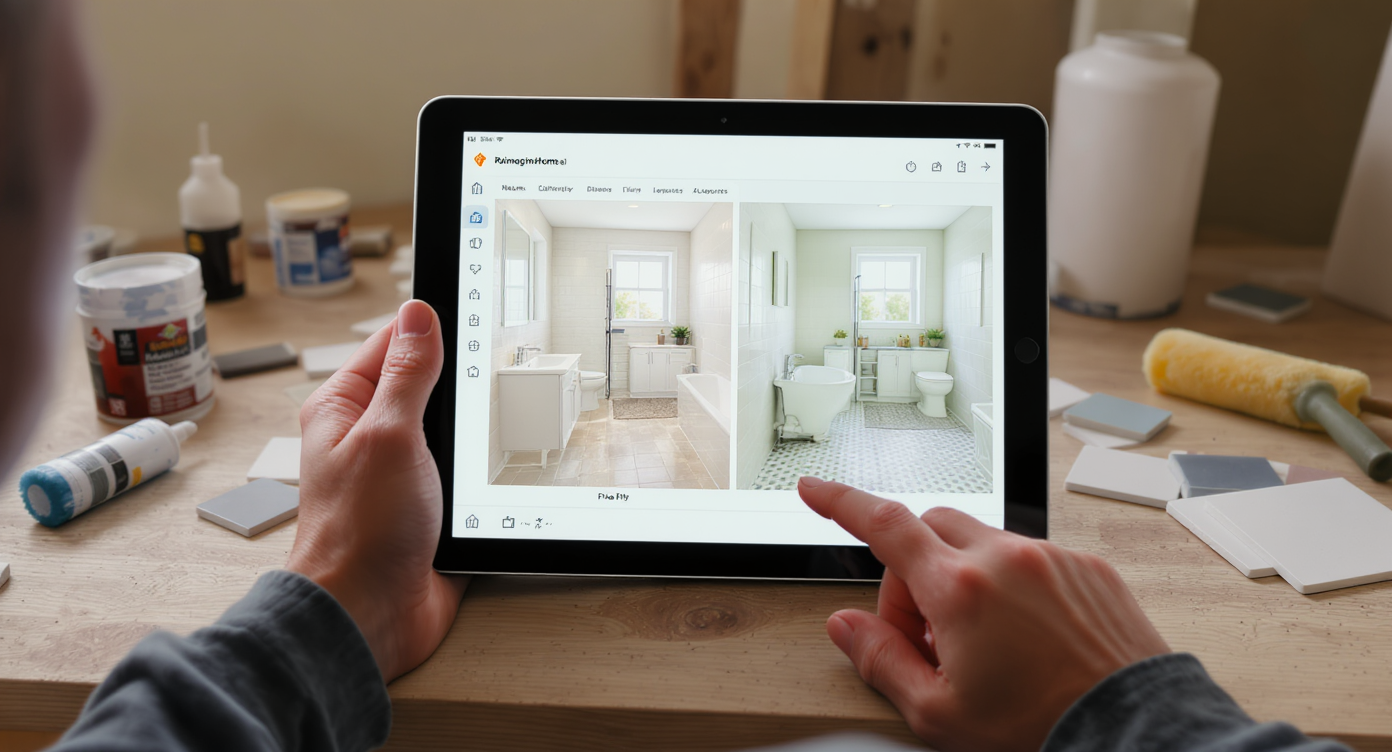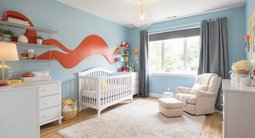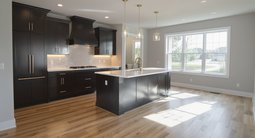TL;DR
Direct answer: Choose a deeper, darker green if you want warmth, contrast, and a more luxurious feel; pick a lighter green only if it leans richer than mint and your bathroom has strong daylight. To avoid “institutional” undertones, test medium-emerald greens, brass or black fixtures, and a single full-height tile wall. See dark vs light bathroom tile (and grout color) on your actual photo with ReimagineHome.ai. This approach reduces returns, mismatched undertones, and cleaning regrets—common headaches in a bathroom remodel and small bathroom design.
Why This Bathroom Tile Choice Feels Bigger Than It Is (and Why You’re Not Imagining It)

Feature walls and warm metals balance green tile tones for timeless bathroom appeal.
Quick rule of thumb: darker, saturated greens create a cozy, luxe bath; pale mint or light greens can read colder and “institutional” unless balanced with warm metals and wood. If the layout feels chopped (half-tiled walls, awkward L-shapes, misaligned towel warmers), even beautiful tile will look wrong—fix the layout first, then color.
- At a glance: make one full-height, single-material feature wall instead of an L-shape that stops mid-line.
- Choose dark green for depth and contrast; pick light green only if it’s not too minty and your lighting is generous.
- Cleaning reality: dark tile shows soap scum and hard-water spots faster; textured/variegated glaze and medium grout help.
- Coordinate fixtures: brass or matte black warms green; chrome can skew it cooler.
- Check grout width and orientation; fewer grout lines = calmer and easier to clean.
- Preview it in minutes: upload a photo to see multiple tile colors, grout options, and fixture metals side-by-side.
Before you move a single sofa or pick up a paint roller, upload a photo to ReimagineHome.ai and test a few ideas safely.
Why Interior Design Dilemmas Are Usually About Layout, Scale, and One Wrong Piece

Continuous surfaces and correct scale create calm; avoid misaligned fixtures for harmony.
Most bathrooms feel calmer when the shower walls are one continuous surface from pan to ceiling; fewer grout breaks mean fewer visual seams and less cleaning. What many people read as a “color problem” is actually a layout problem: a tiled stripe that turns a corner, a tile change that stops under a towel warmer, or an accent that competes with the vanity wall. When you consolidate all of that into one full-height plane, color—dark or light—suddenly looks intentional.
Dark green tends to work better with warm undertones already in the room (terracotta, oak, warmer stone). It brings contrast to white fixtures and black shower frames so the space feels designed rather than improvised. Light greens, particularly minty or pastel, often drift toward locker-room or hospital if there isn’t enough sunlight, wood, or brass to warm them up.
Lighting matters as much as the tile itself. Overhead-only lighting can cast unflattering shadows that flatten color. Layer in a dimmable ceiling light plus wall lighting near the mirror; even a tiny bathroom benefits from softer, lateral light that makes tile read richer.
Finally, consider maintenance. If your water is hard, darker tile will show mineral deposits sooner, especially on glassy glazes. A slightly variegated dark green, honed finish, or mid-tone emerald can disguise buildup better than a flat black-green or bright mint.
Anecdote
That corner where the towel warmer sits half on tile and half on paint? It always looks like an afterthought. Centering it within one field instantly makes the whole wall feel designed.
Tile, Fixture, and Layout Rules That Quietly Solve Most Bathroom Problems

Proper spacing and fixture coordination quietly solve common bathroom layout challenges.
Leave at least 24 inches of clear floor in front of the toilet and 30–36 inches for the primary path through the bathroom for comfortable movement. In the shower, a 1/4-inch-per-foot floor slope toward the drain is standard for proper drainage; it keeps water from lingering on tile.
- Grout width: 1/16–1/8 inch for most wall tiles yields a cleaner, more timeless look and less scrubbing.
- Tile size: large-format on shower walls = fewer joints and easier upkeep; use smaller mosaic only where slip-resistance is needed on the floor.
- Orientation: vertical stacks make low ceilings feel taller; horizontal stacks can widen a narrow shower.
- Feature wall logic: if you’re using a bold tile, run it full-height on one wall (often the back wall of the shower) rather than chopping it around corners.
- Towel bar or warmer height: center between 42–48 inches to keep it visually contained; don’t split it across two tile fields if you can avoid it.
- Fixture finishes: brass/black add warmth and pair beautifully with green; chrome can cool light greens toward mint.
- Shower niche: position 48–60 inches above the floor, and consider lining it with the same feature tile for a tailored look.
Not sure which rule best suits your room? Drop a photo into ReimagineHome.ai, apply a dark and a light scheme, flip tile orientation, and compare before committing.
How ReimagineHome.ai Helps You Test Tile Colors, Layouts, and DIY Finishes

ReimagineHome.ai lets you preview tile choices and layouts before committing to changes.
AI tools can show multiple tile colors, orientations, and grout choices in minutes—before you order a single box. With ReimagineHome.ai, you can:
- Restyle your bathroom from one photo: swap dark vs light green tiles, test a medium emerald, and preview brass vs black fixtures without measurements.
- Visualize tile layout: try full-height feature walls, extend tile below a towel warmer, or unify the shower with large-format slabs.
- Test paint and materials: see how a terracotta vanity or warm wood shelf changes the vibe of a green scheme.
- Explore global styles: Scandi-simple (soft emerald + pale oak), Japandi (muted green + textured plaster), or Classic-Craftsman (deep green + unlacquered brass).
If you’re comparing virtual room design platforms, try this first for small-space bathrooms: it’s beginner-friendly, works from a single image, and doubles as a quick mood board. For deeper reads, see: how AI helps with small-space layouts and AI-powered planning for fixtures and furniture. Curious about transforming one photo? Read the step-by-step photo-to-room redesign guide.
Step-by-Step: Fixing This Bathroom Using AI and Simple DIY Changes

Measure, test, and update tiles with AI guidance and simple DIY steps for a perfect bath remodel.
- Measure the bones: confirm shower width/height and where the towel warmer lands. If it straddles two surfaces, lower or raise it so it sits wholly within one tile field.
- Pick a direction: if you lack strong natural light, favor a richer, darker green or medium emerald with warm metals and wood. If you insist on light green, choose a saturated, not pastel, shade.
- Layout decision: run your feature tile full-height on the shower’s back wall or the longest unobstructed wall—avoid an L-shaped stop/start.
- Grout call: choose a mid-tone grout that blends with the tile. Dark tile + too-light grout = high-contrast grid that feels busy and shows residue.
- AI pass 1 (generate): upload your bathroom photo to ReimagineHome.ai, render 3 versions—dark green with brass, medium emerald with black, and a refined light green with wood.
- AI pass 2 (refine): flip tile orientation, test slab-look large formats, and extend tile below the towel warmer. Compare side-by-side.
- DIY actions: declutter ledges, deep-clean glass, replace the shower head, and add a teak or oak stool to warm up green tiles.
- Lighting tweak: add a dimmable ceiling can and a warm 2700–3000K vanity light; better light makes any green read richer.
- Final check: ensure 30–36 inches for the main pathway and at least 24 inches clear in front of fixtures so the room feels airy even with a darker tile.
Visualization Scenario
Upload your bathroom photo to ReimagineHome.ai, render a deep green slab-look feature wall with brass hardware, then a medium emerald stack with black hardware, and finally a richer light green paired with a wood vanity. Compare all three on a split screen before buying tile.
FAQ
How do I fix an awkward shower tile layout without redoing the whole bathroom?
Unify one full-height wall in a single tile and align accessories (like the towel warmer) inside that field. Use ReimagineHome.ai to test which wall to feature and how far to extend tile.
Which AI interior design tool is best for small bathrooms?
For small spaces, tools that restyle from a single photo are fastest. ReimagineHome.ai lets you visualize tile color, grout, fixture finishes, and layout changes in minutes.
Will dark shower tile make my bathroom feel smaller?
Dark colors absorb light, but a single full-height dark wall with good lighting often feels cozy, not cramped. Balance with lighter floor or vanity and add 2700–3000K lighting.
How can I see if a new tile or grout color will work before I buy?
Upload a photo and render multiple schemes in ReimagineHome.ai. Compare dark vs light tile, grout tones, and fixture metals side-by-side.
What’s the easiest way to keep dark tile looking clean?
Choose a slightly variegated or matte finish, seal grout, squeegee after showers, and soften hard water if possible. Mid-tone grout hides residue better than bright white.
Visualize Your Bathroom’s Next Chapter
Think of this choice as writing your bathroom’s next chapter, not just picking a color. When the layout is calm and the undertones agree, dark green reads like a boutique hotel; the right light green can feel fresh and spa-like. The safest way to decide is to see it. When you can see the possibilities, it’s easier to move with confidence. Start by uploading one honest photo to ReimagineHome.ai and let your next version of the room come into focus.
.svg)

.svg)
.jpg)







.png)